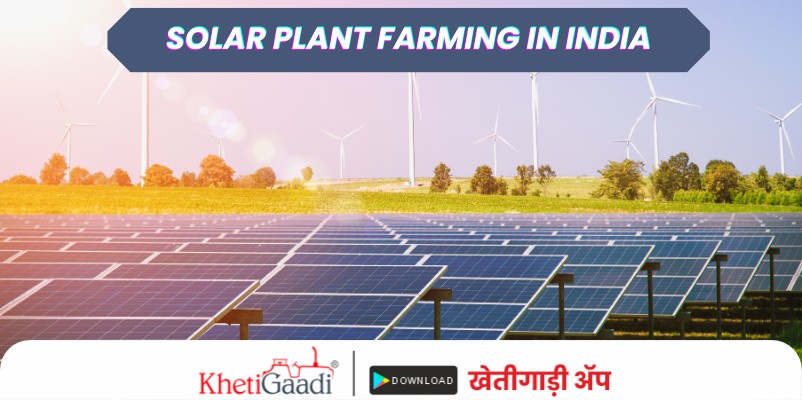Solar Plant Farming in India: A Lucrative and Sustainable Opportunity
Solar plant farming, also referred to as solar energy farming or solar agriculture, has become a rapidly expanding industry in India. This innovative approach involves installing solar panels or arrays on agricultural land to harness solar energy. It offers a dual benefit: generating clean, renewable energy while simultaneously reducing carbon emissions. As global efforts intensify to combat climate change and decrease reliance on fossil fuels, solar plant farming has emerged as a promising and sustainable venture.
Market Scope for Solar Farming
The market for solar farming has experienced significant growth in recent years. In 2022, the global solar farm market size was estimated at 79 billion USD, with projections suggesting a potential increase to around 268 billion USD by 2030. This growth is especially notable in developing countries, where there is a rising demand for electricity from renewable sources. In India, the government's strong push for renewable energy has created a fertile environment for the solar farming industry's expansion. The sector's growth trajectory indicates lucrative opportunities for entrepreneurs and investors, making it an attractive option in the green energy sector.
Investment Requirements
Starting a solar plant farming business requires substantial investment. The total cost can vary based on several factors, including the area of land, the number of solar panels, equipment, and installation expenses. In India, the cost to establish a one-megawatt solar plant can range from INR 4 to 5 crores. For larger capacities, such as a 10-megawatt plant, the investment can escalate to around INR 50 crores. These estimates cover expenses related to land acquisition, solar panels, transformers, inverters, mounting structures, and other essential equipment. A clear understanding of the solar panel cost and solar panel price is crucial for accurate budgeting and planning.
Space and Location Considerations
The success of a solar plant farming business significantly depends on selecting the right location. In India, approximately one acre of land is required for every one-megawatt solar power generation. Consequently, a solar plant with a capacity of 5 to 10 megawatts would necessitate about 5 to 10 acres of land. Ideal locations should provide ample sunlight, easy accessibility, and proximity to the power grid to minimize transmission losses. While these are general guidelines, specific requirements can vary based on the project's scale and scope.
Licensing and Permits
Securing the necessary licenses and permits is a crucial step before commencing operations. In India, solar power projects are governed by the Ministry of New and Renewable Energy and the respective state electricity regulatory authorities. Key licenses and approvals include obtaining a power purchase agreement (PPA) from a power supply company, permissions from local authorities, environmental clearance from the State Pollution Control Board, and registration with the state nodal agency. Additionally, compliance with Goods and Services Tax (GST) regulations and other state-specific requirements is essential.
Equipment and Installation
Setting up a solar farming business involves procuring various equipment and components. Essential items include solar panels, mounting structures, inverters, battery storage systems, transformers, cables, wiring, monitoring and control systems, switchgear, and protection devices. The specific equipment needed can vary depending on the size and scale of the solar plant.
The installation process starts with a thorough site ****ysis to determine the solar potential, followed by the physical installation of solar panels and ****ociated infrastructure. Collaborating with experienced solar engineers and industry professionals can ensure optimal energy production and system efficiency. After installation, rigorous testing and commissioning are necessary to verify the plant's proper functioning.
Profitability and Marketing
The profitability of solar plant farming in India can vary based on factors such as market conditions, government policies, project location, and operational efficiency. On average, solar farms in India can generate an annual return on investment (ROI) of around 12 to 20%. However, these figures can fluctuate depending on specific cir****stances.
Effective marketing strategies are crucial for attracting customers and investors. A professional website showcasing the farm's strengths, customer testimonials, and information about solar energy generation can be valuable. Engaging with potential customers on social media, sharing updates on the solar industry, and parti****ting in relevant industry events can help build a network and foster partnerships. Highlighting the benefits of solar lights, green energy, and the role of solar parks can also attract interest.
In conclusion, solar plant farming in India offers a promising business opportunity. While it requires significant investment and careful planning, the potential for profit and environmental benefits makes it a worthwhile endeavor. By harnessing renewable energy from the sun, solar farming can contribute to a sustainable future and provide substantial economic returns for those willing to invest in this growing industry.
